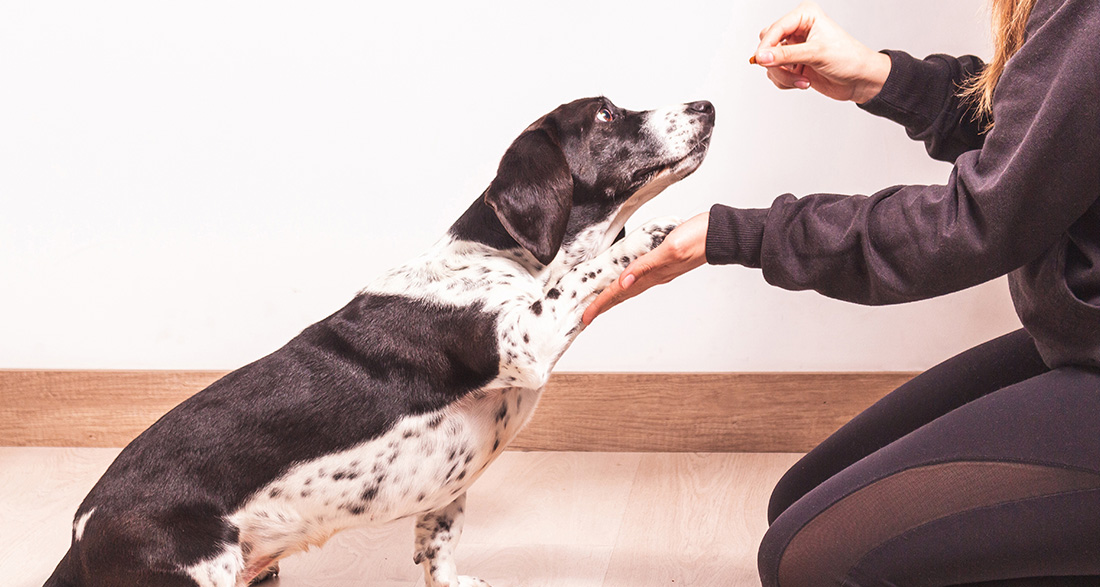Obedience training is a dog sport that revolves around obedience. However, it’s not about drill, as the term might suggest, but rather about building a strong bond between human and dog. Even in obedience training, “obedience” is built exclusively through food or prey motivation or with the clicker. Empathy, patience, and a good understanding of the nature of dogs are required. Learn everything about obedience training and competition here.
Obedience Training: What Matters?
In obedience training, it’s important that the dog performs all exercises with joy, but also quickly and correctly. The special thing about obedience: You feel the dog through close collaboration. Motivation gives the dog the “desire” to work for you.
It’s important that the exercises deepen the human-dog relationship, and the dog has “a smile” on its muzzle. Drill has no place – instead, precision is required! And that’s the challenge for both dog and handler. Creativity in training, motivating the dog correctly, capturing its full attention so that it can execute commands immediately from a distance. It should practically always be connected to the handler by an invisible leash.
Which Dogs are Suitable for Obedience?
Obedience is suitable for every dog. The height of the hurdle to be overcome is adjusted to the shoulder height of each dog. The retrieval items are also adapted to the size of the dog. Each dog should also show the basic speed of its breed in the exercises.
So, it’s not about outstanding speed. Therefore, obedience is also suitable for dogs that are not quite as fit or are older. All exercises can be built up in a playful way. So, you can also train obedience at home (in front of the mirror). It’s always pure teamwork, where even very small and older dogs have a chance.
Nose Work in Obedience
The only nose work in obedience is the so-called self-identification: The dog searches among the wooden objects lying on the ground for the one that the handler previously held in their hand. Depending on the class, up to a maximum of six wooden objects are placed in a circle or on a line, five neutral ones and the one with the handler’s scent. The dog must retrieve the found wood cleanly and quickly.
What Requirements Must Dog and Handler Fulfill for Obedience?
Anyone who wants to do obedience training with their dog must be in good condition themselves: good physical condition, good balance, and a good body feeling are required. The handler should be able to “read” their dog; they should be emotionally, mentally, and physically fit because everything starts in the handler’s mind, not with the dog. When everything is right, the dog wants to work for us.
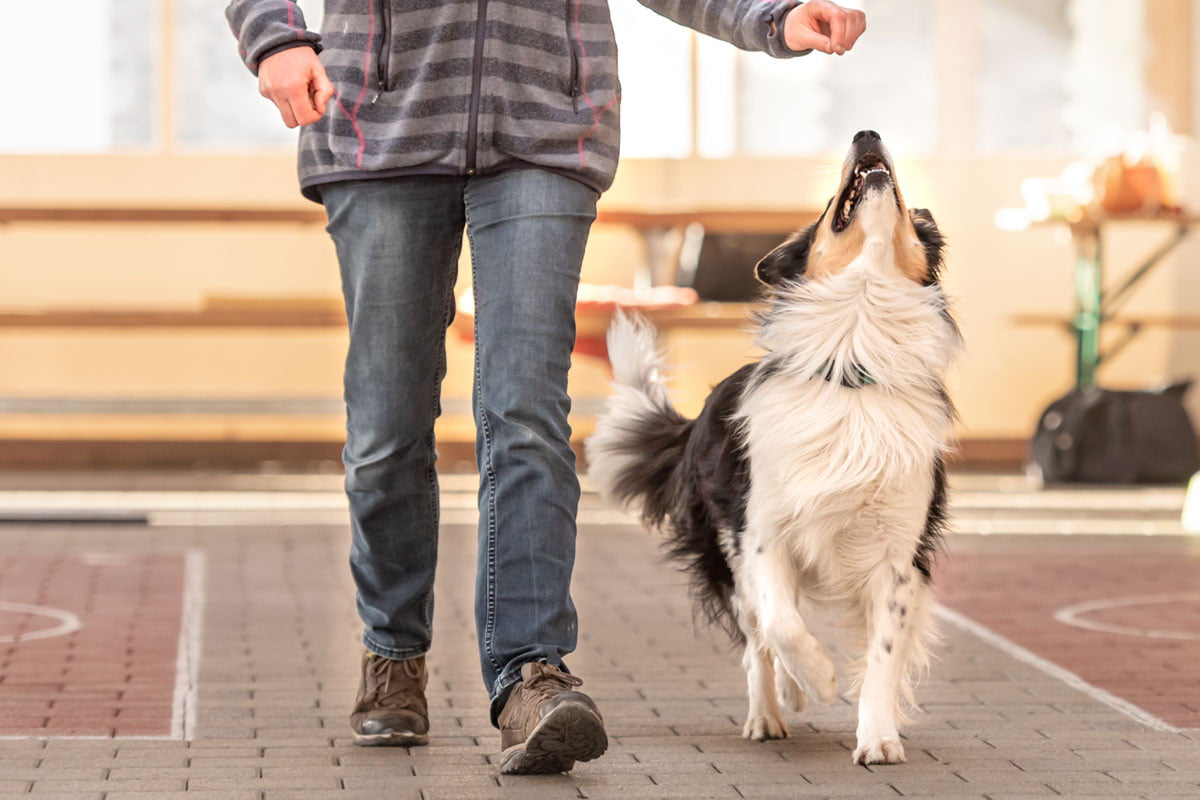
Obedience Examination: Requirements for Handlers in Obedience:
Official obedience exams and competitions are conducted by clubs and organizations. There are open obedience competitions and so-called qualification obedience competitions.
- Open Competition: Anyone can participate who is a member of a AKC-recognized association or member club.
- Qualification Competition: Only teams with dogs in Obedience Class 3 can participate (winners should participate in World Championships).
Obedience Examination: Requirements for Dogs in Obedience:
The size and breed of the dog do not matter in obedience. However, the dog should be
- clearly identifiable (chip, tattoo)
- have adequate vaccination protection
- be healthy
Dogs excluded from obedience competition include those who are
- blind
- have a contagious disease or infection
- have parasites (worms, mange)
- are aggressive
- taped, sewn, or bandaged
Female dogs in heat are allowed to participate in obedience competitions. However, they usually start last.
Obedience Training: Tips for a Successful Start
You can start obedience training with your puppy at a young age, as long as you don’t have expectations of the puppy. Otherwise, the puppy will lose the joy of training with you. You can teach everything to him in a playful way. Since usually the handler is not interesting enough for the dog, you need a tool, a piece of meat, or a ball, for example. Just something that the dog really wants.
Parallel to using these tools, the handler must learn to play with the dog, with or without an object. The goal is for the handler to be the highest motivation for the dog. Teach the dog correct “heel” from the beginning, and he will never assume a crooked basic position. He will only know perfection, so you will never have to correct him. Train for only 5-10 minutes every day. Because a dog in high tension and concentration can absorb information properly for at most 10 minutes.
Step by step, you lead the dog to the perfect exercise. You must first break down the respective exercises and then start with the first step. Skipping individual steps will eventually cause the entire exercise to fall apart. Only proceed to the next step when you are sure the dog understands everything. Piece together all these little steps at the end like a “puzzle.” Work loosely and consistently.
Obedience Training Accessories Needed for Dogs
If you want to train your dog in obedience, you should create similar conditions to those found in competitions right away.
You should use the following items for obedience training:
- Collar
- Hurdle
- Retrieval objects
- Stopwatch
- Chalk, sawdust, fabric ribbons (to define sidelines as in obedience tests)
- Pylons and markers (to mark the starting and ending points)
Obedience Commands
Obedience consists of familiar commands:
- Sit
- Down
- Stand
- Stay
- Heel
- and Retrieve
In addition, there are some exercises that must be performed at a distance.
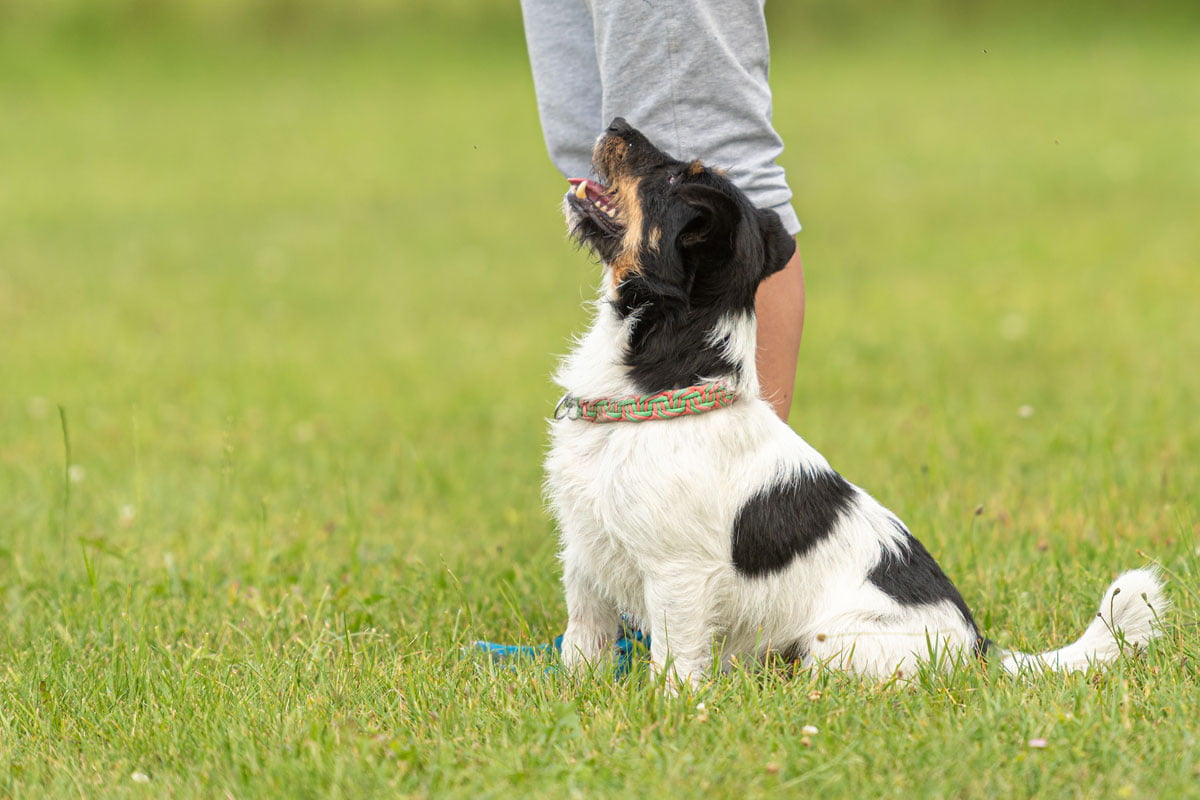
The Sequence in an Obedience Competition
Obedience is divided into four to seven classes depending on the state/country. These are the mandatory exercises:
- Beginner Class
- Senior Class
- Class 1
- Class 2
- Class 3
In each class, ten exercises must be demonstrated. Read on to learn which exercises are included and which dogs are eligible for each class.
Obedience with Dogs: Beginner Class
The Beginner Class is the entry-level class. Here, all dogs meeting the usual requirements, which are at least 15 months old, can participate. According to the examination regulations of the AKC (American Kennel Club), the following eleven exercises are evaluated in the Beginner Class:
- Behavior towards other dogs
- Stand and be examined
- Two minutes down in a group, handler in view
- Off-leash heeling
- Sit or down on the move
- Send to a square 10 meters away with a down
- Recall
- Retrieve on flat ground
- Distance control from 3 meters, two changes
- Send to a group of pylons/barrels 5 meters away
- Overall impression
The team is also evaluated, meaning the trusting and cooperative interaction between human and dog.
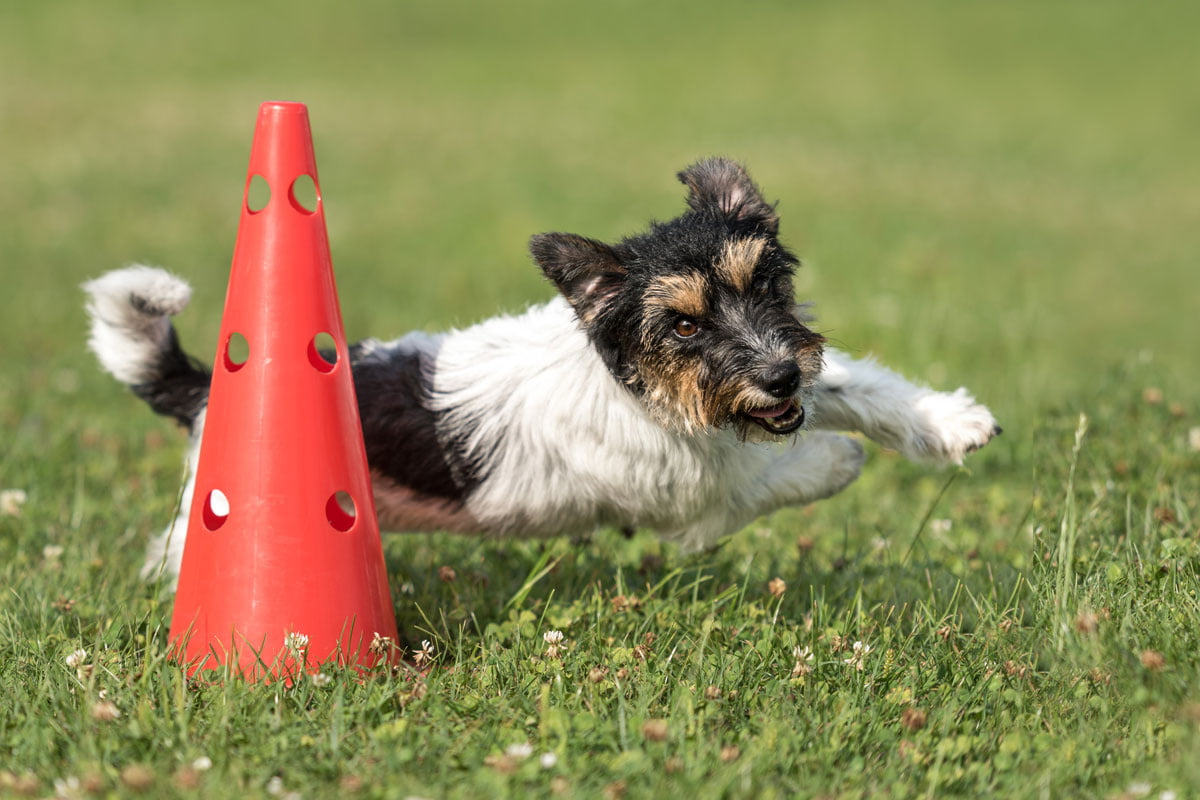
Obedience with Dogs: Senior Class
To compete in the Senior Class, the dog must have passed at least Class 1. Additionally, the dog must have reached the age of 8. Dogs starting in the Senior Class cannot return to other classes.
These exercises must be mastered by a human-dog team in the Senior Class according to the examination regulations of the AKC.
- Two minutes down in a group, handler in view
- Off-leash heeling
- Recall
- Send to a square 15 meters away with a down
- Stand and/or sit and/or down on the move
- Retrieve with directional cues
- Send around a group of pylons/barrels 5 meters away
- Scent identification from six wooden objects
- Distance control from ten meters
- Overall impression
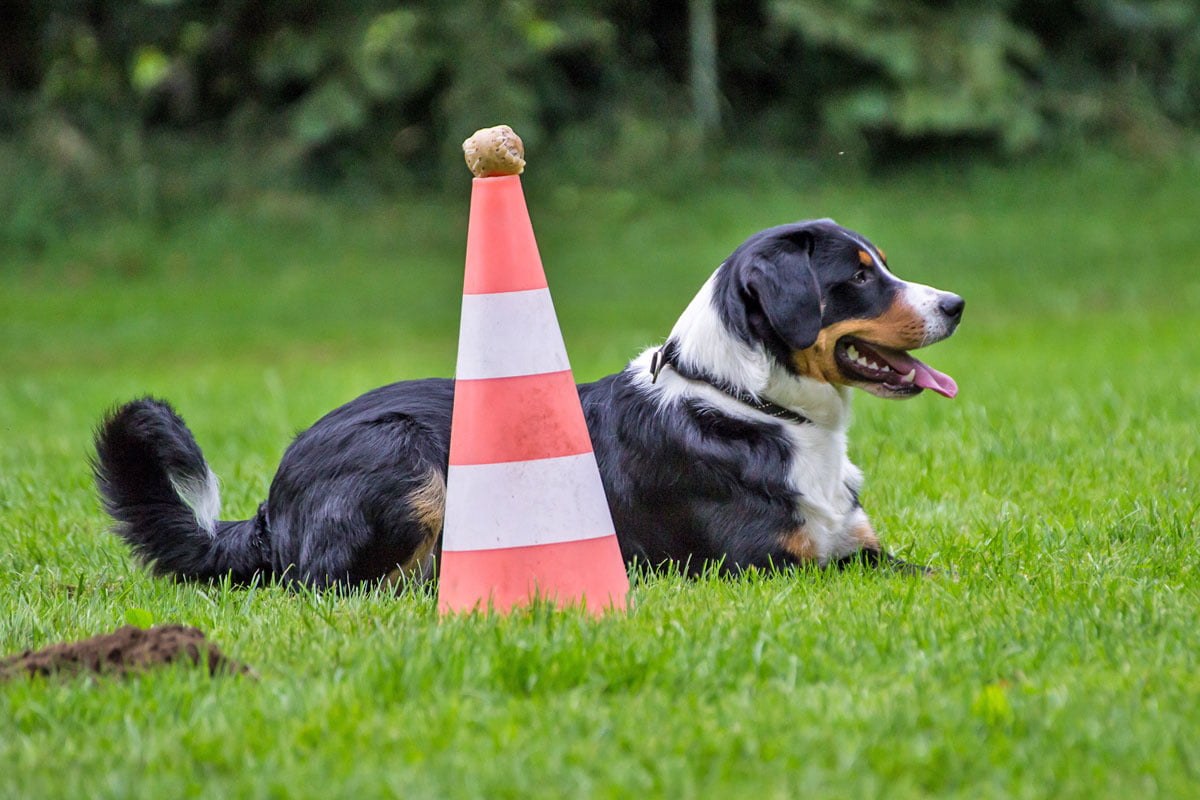
Obedience with Dogs: Class 1
Dogs that have completed the Beginner Class with the rating “excellent” are allowed to compete in Obedience Class 1. The dog must be at least 15 months old.
These Obedience exercises must be completed in Class 1:
- One minute sit in a group, handler in view of the dog
- Off-leash heeling
- Stand or sit or down on the move
- Recall
- Send to a square
- Distance control from five meters
- Retrieve and jump over a hurdle
- Send around a group of pylons/barrels and return
- Overall impression
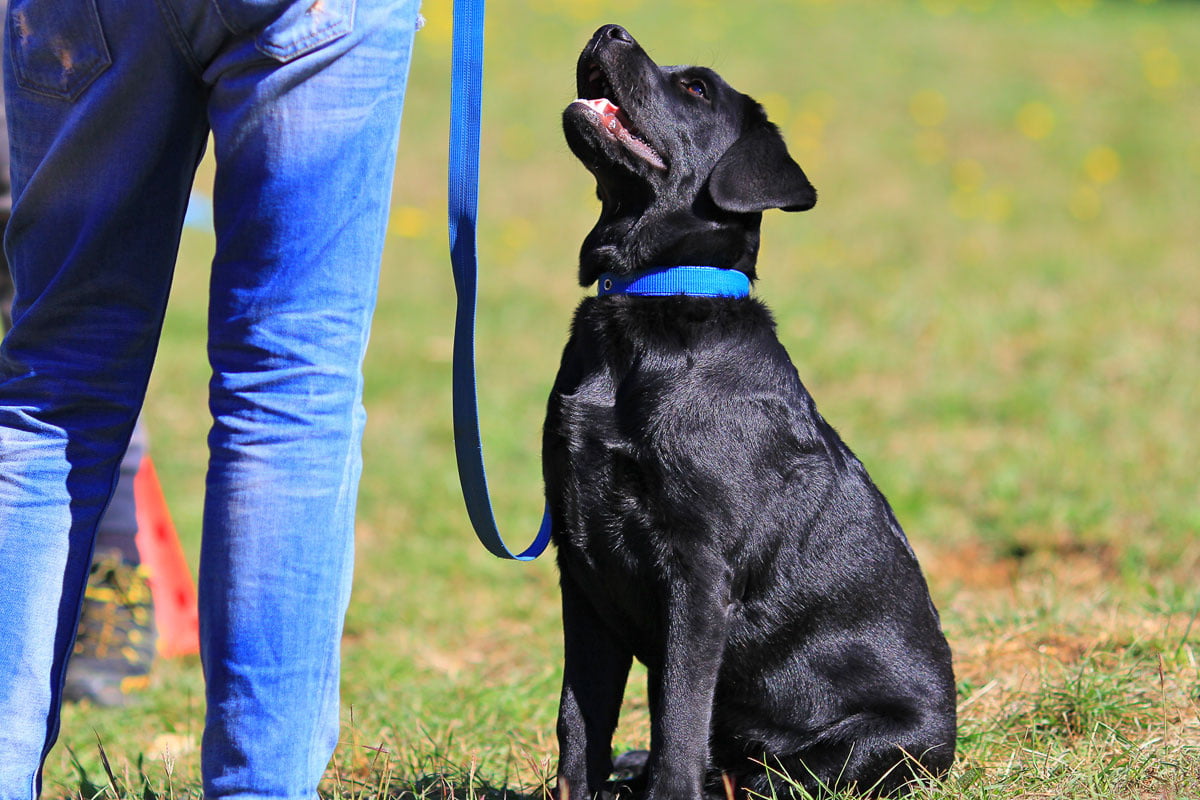
Obedience with Dogs: Class 2
In Class 2, one may compete in Obedience only after completing Class 1 with a rating of “excellent”. The dog must be at least 16 months old in this class.
In Class 2, the dog must demonstrate its skills in these exercises:
- Two minutes down in a group, handler out of sight of the dog
- Off-leash heeling
- Stand or sit or down on the move (two of these positions)
- Recall from a stand
- Send to a square with a down and recall
- Retrieve with directional cues
- Scent identification from six wooden objects
- Distance control from 10 meters
- Send around a group of pylons/barrels, stand/down and jump
- Overall impression
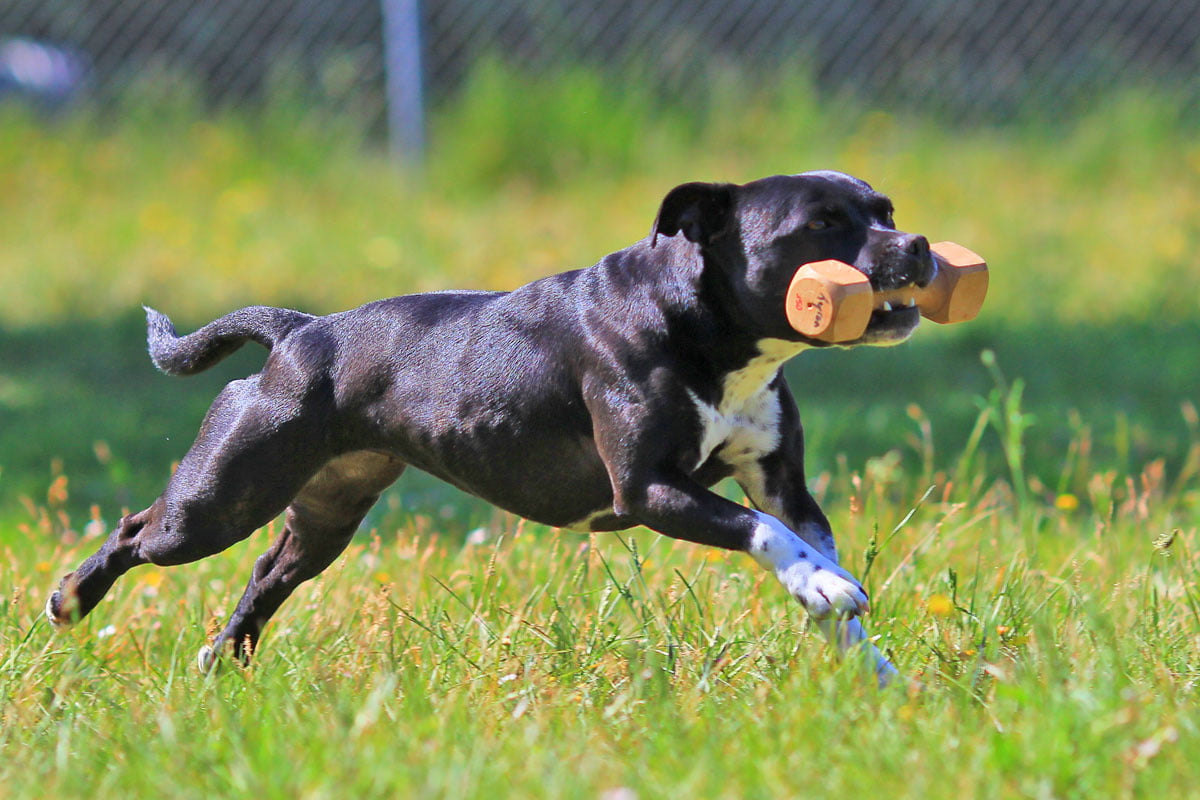
Obedience with Dogs: Class 3
Class 3 is the master class. Only if the dog-handler team has completed Class 2 with an “excellent” rating may the team participate in Class 3 competitions. The dog must be at least 17 months old for Class 3. The following exercises are required according to the examination regulations of the AKC:
- Two minutes sit in a group, handler out of sight of the dog
- One minute down in a group with recall
- Off-leash heeling
- Positions on the move
- Recall with stand/sit/down
- Send to a square with directional cues, down and recall
- Retrieve on command
- Send around a group of pylons, stand/sit/down, retrieve and jump
- Scent identification and retrieve
- Distance control
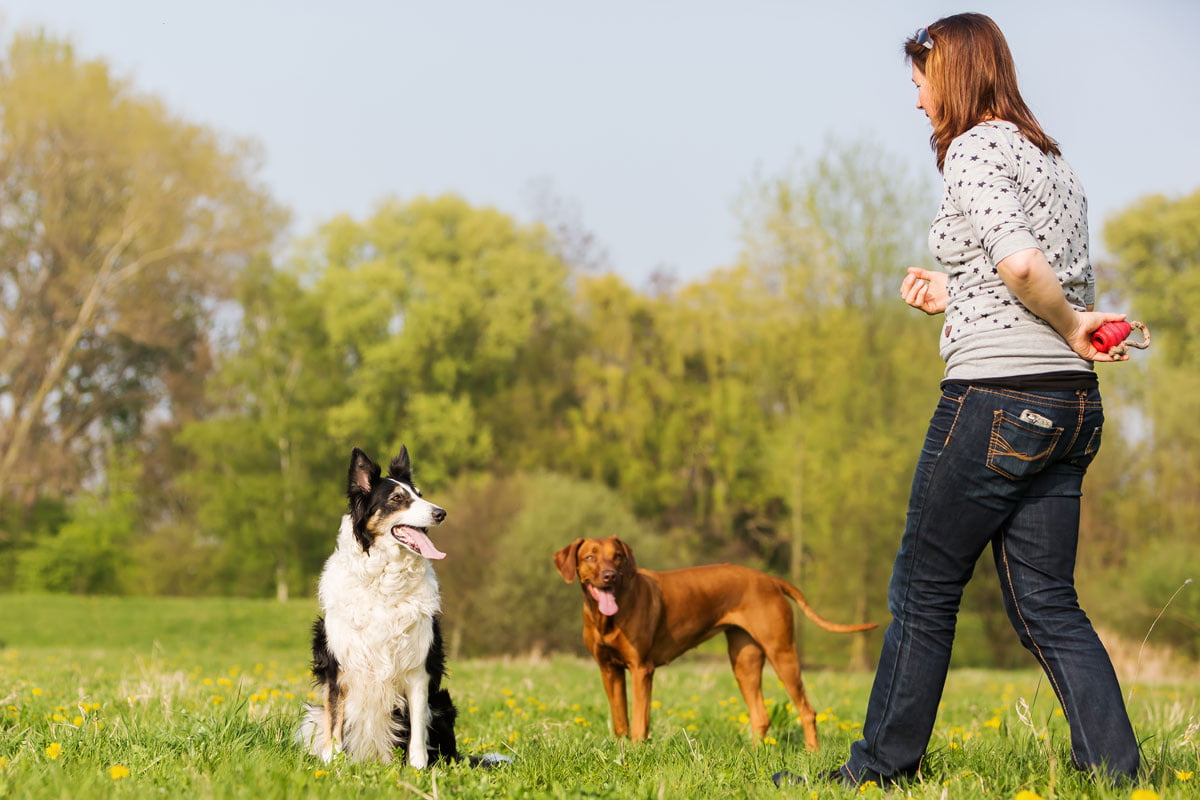
Obedience: How the Dog is Evaluated
The evaluation of the exercises is done by the performance judge. Additionally, there is the ring steward who gives all instructions to the handler about the exercises. He accompanies the teams throughout the competition.
This score determines the rating:
| Percentage | Score | Rating |
|---|---|---|
| >80 % | 256 – 320 | Excellent |
| 70 % – 80 % | 224 – 255.5 | Very Good |
| 60 % – 70 % | 192 – 223.5 | Good |
| < 60 % | 0 – 191.5 | Insufficient |
Only when the rating “excellent” has been achieved in a class does the human-dog team move up to the next class. However, the dog and handler can never be demoted.
The dog sport of Obedience is suitable for all dogs, of all sizes, ages, and breeds. Furthermore, it strengthens the relationship between human and dog. It’s no wonder that Obedience is so popular among many dog owners.


